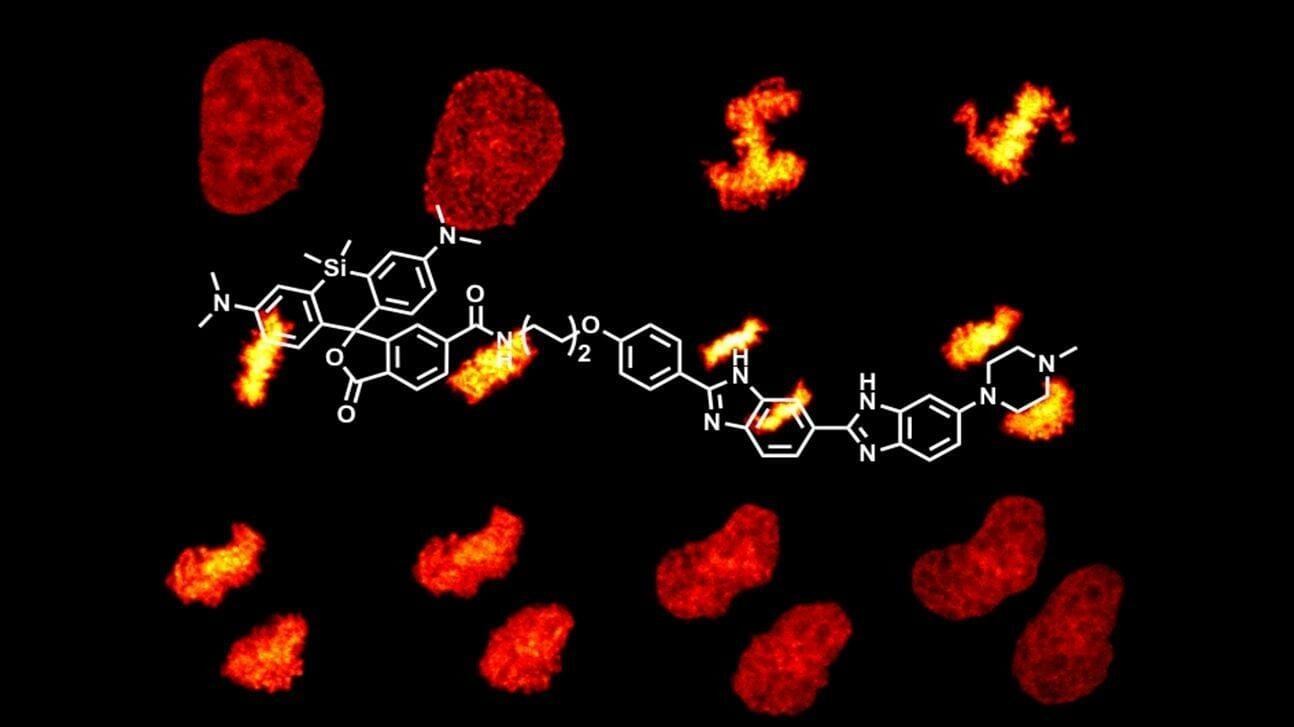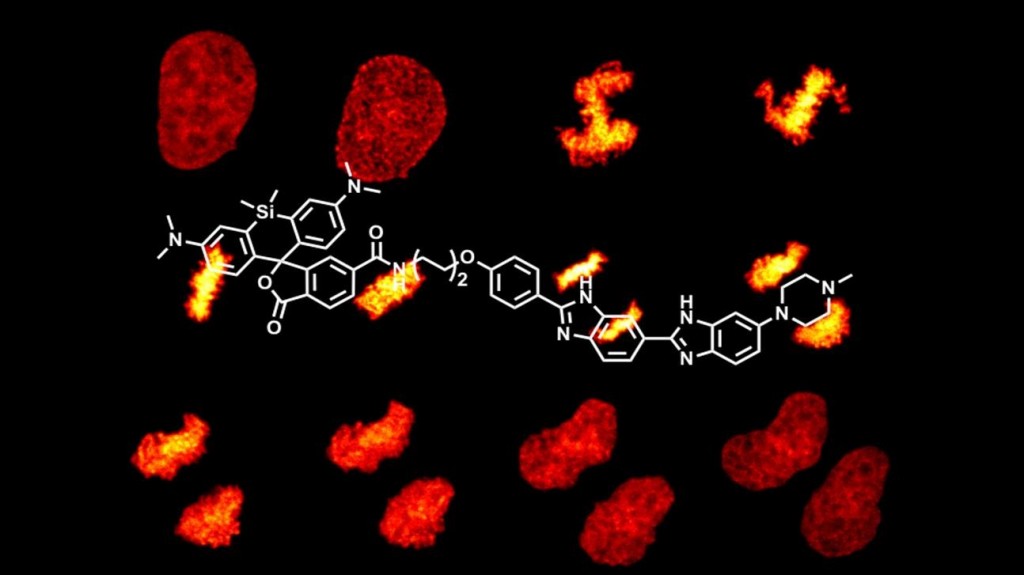A Non-Toxic DNA Stain for Super Resolution Microscopy

Scientists from the Échole Polytechnique Fédérale de Laussane (EFPL) have created a new DNA stain that can be used in live cells. The far-red DNA stain, called SiR-Hoestch, is non-toxic, works for different cell types and can be used in super-resolution microscopy. These characteristics make it suitable for live-cell imaging. The work has been published in Nature Communications.
Live cell imaging is a valuable technique that allows following cellular processes in a physiologically relevant state. In these experiments, DNA is stained and used as an internal reference to identify cells or track the cell division process. The problem is that many dyes are toxic to the cell, and that they are excited by highly mutagenic wavelengths such as UV and blue light. Moreover, current DNA dyes are not suitable for use in super-resolution microscopy, a light microscopy technique that allows to obtain images with a higher resolution than the diffraction limit. Some examples are the Hoechst33342, non-toxic at working concentrations but excitable with blue light; or the DRAQ5, excited at the far-red but toxic at the concentrations required for live cell imaging. For all these reasons, microscopists from all over the world have been dreaming with a dye that is excited in the far-red part of the electromagnetic spectrum, is non-toxic and is apt for super-resolution microscopy.
Generating a new stain by attaching preexisting ones
Taking into account the characteristics that the ‘perfect’ dye should have, Dr. Kai Johnson and his colleagues decided to combine current dyes that present some of the desired features and complement each other´s shortcomings. Hoestch (bisbenzimide) is a dye that binds the DNA minor groove without affecting the cell’s function. Silicon rhodamine (SiR) is a fluorescent molecule developed in Dr. Johnson’s lab that is excited with far-red light. The team joined both molecules and named the new molecule SiR-Hoechst. When the new dye binds the DNA, it emits a fluorescent red light. The unbound molecules stay turned off, minimizing background. The new dye can be used in any type of cell or tissue. Far-red excitacion is non phototoxic, which permits tracking long biological processes in real time. The red emission allows to combine the dye with typical fluorescent green and yellow protein tags.
SiR-Hoechst was succesfully tested in laser scanning and stimulated emission-depletion (STED) microscopy. The new molecule will be commercialized through the EFPL startup Spirochrome.
Source: Mediacom

